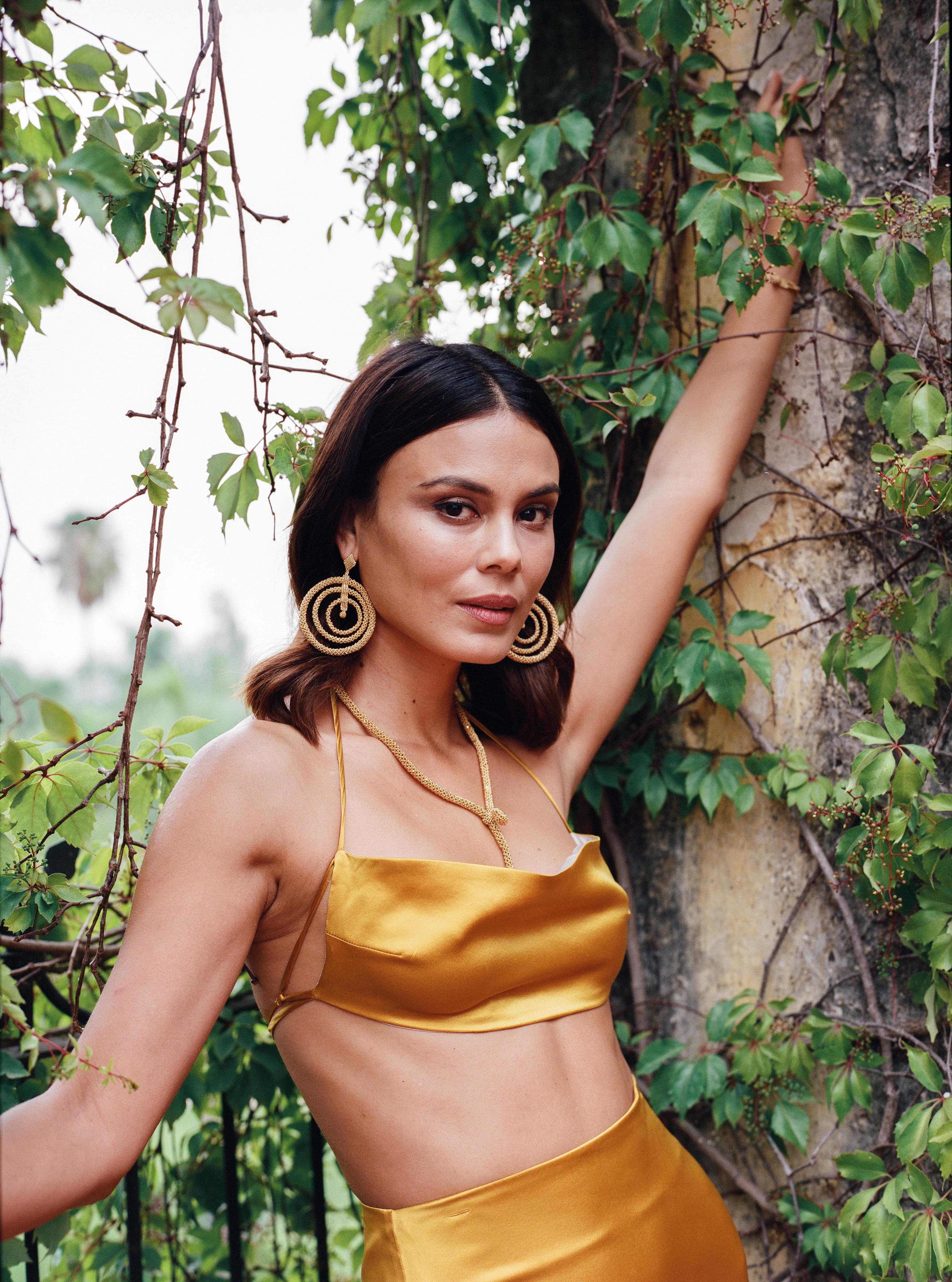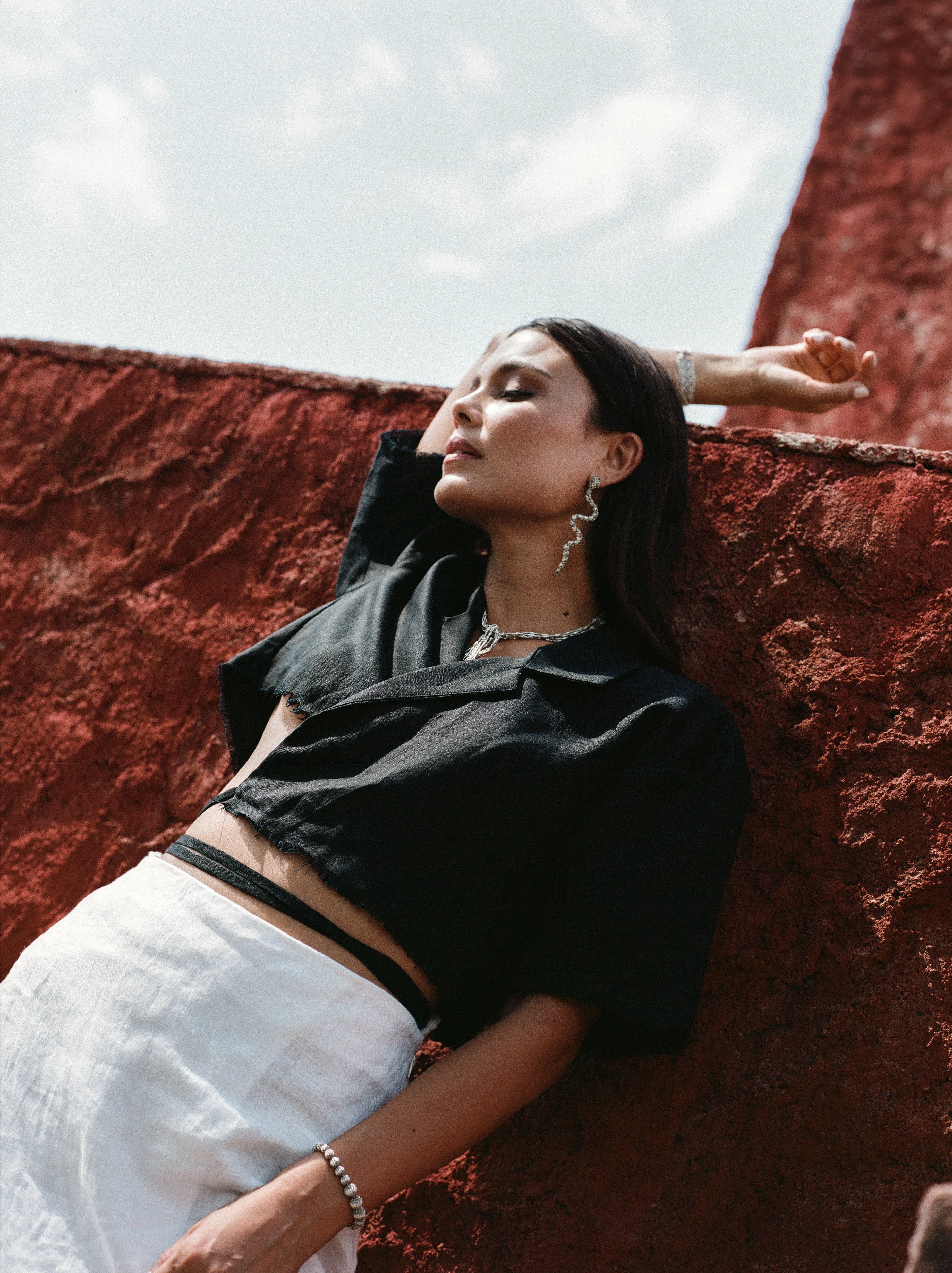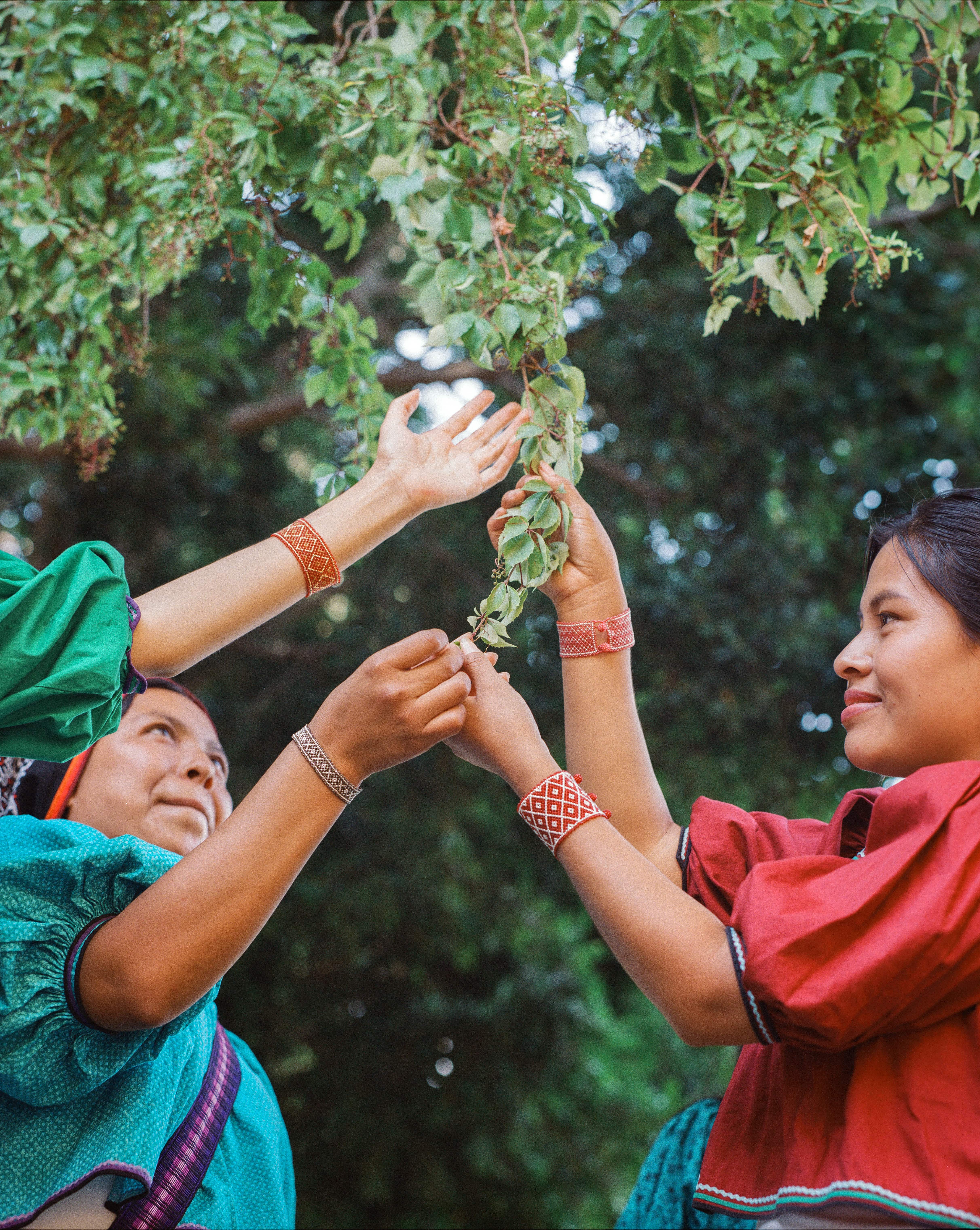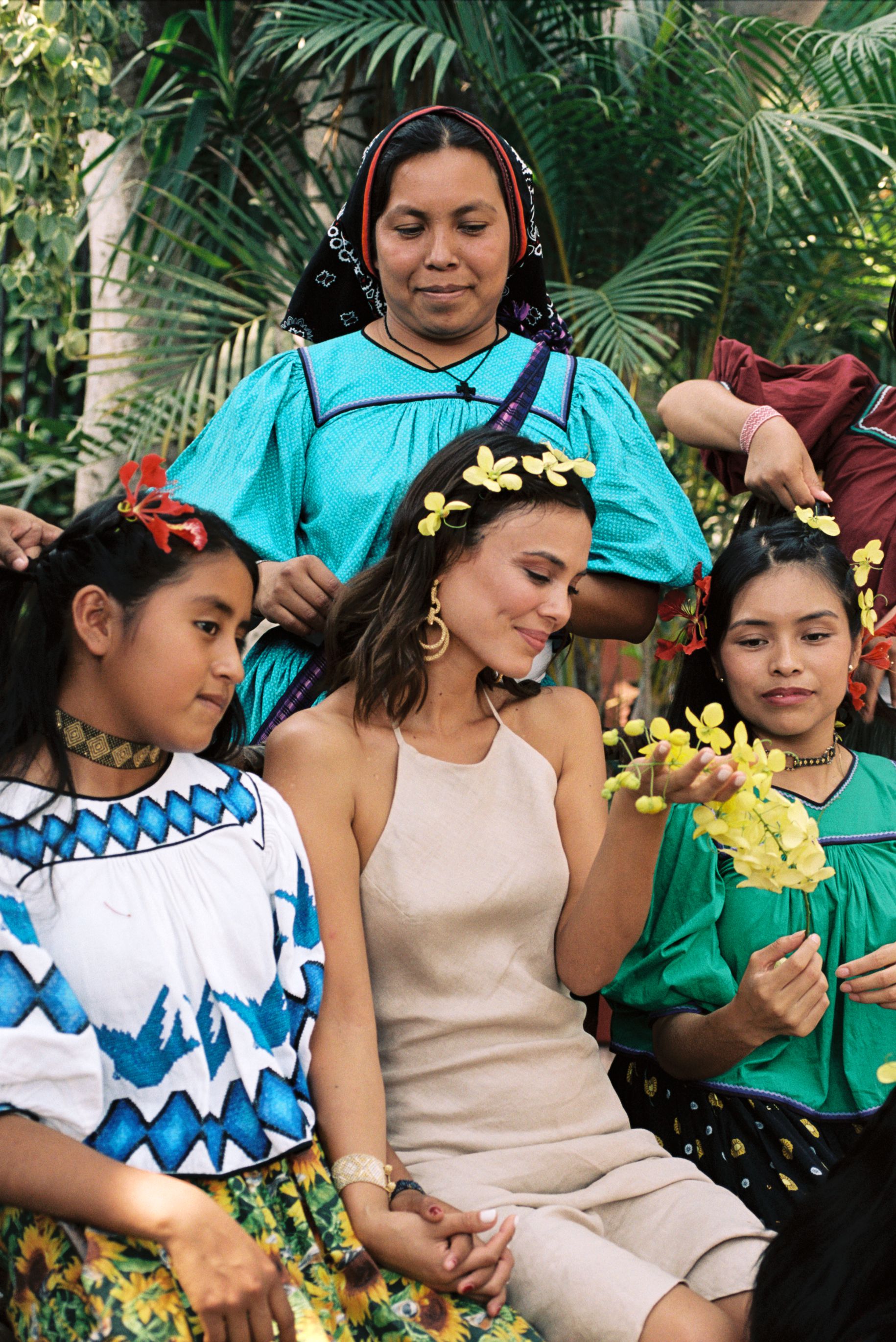Preserving ancient Wixárika art and craftsmanship in Mexico, Kuu work with local artisans to create jewellery that celebrates indigenous culture. The brand have teamed up with activist and actress Nathalie Kelley and photographer Pia Riverola to honour the Wixárika women and communities behind each piece of art.
Kuu means snake in the Wixárika language. From that word comes “Kuuka” which means both “chaquira” and “offering”. When I first came across Kuu’s beautiful and intricate beaded jewelry that was the first thought that came to mind - that these pieces were beyond just aesthetically beautiful accessories. In fact each one is an offering, an act of devotion to the ancestral traditions that make the Wixárika one of the few remaining guardians of Indigenous culture and history in Mexico.
Yet for a cultural group, whose artwork is sold and sometimes fetishized across the world as “Huichol Art”, their language is slowly being lost, their sacred medicine (Peyote) poached to near extinction, and their lands and waters extracted and contaminated. Even their precious beadwork is a dying art as many younger Wixárika are forced to moved to the cities for wage work. As an Indigenous actress and activist who is passionate about elevating Indigenous cultures and values, I regretfully can confirm that this is an all too common story across the world.
When Indigenous languages die and cultures are erased we don’t just lose a few stories, but entire worlds and technologies. Thousands of years of accumulated knowledge of how to live in a balanced harmony with a specific eco-system, entire cosmovisions rooted in respect for all living beings. Mexico’s cultural diversity is just as worthy of protection as its precious bio-diversity. In fact the two are directly related.
So when I learned the story of Kuu, of how founders Martha Collignon and Arizbeth Fierro started Kuu as a way of honoring the Wixárika artisans and supporting their economic, environmental and cultural wellbeing, I knew I wanted to lend my support.

You will notice that in these photos myself and the artisans are portrayed as equals. I’m thankful that the days of using Indigenous people as colorful props in the background, to frame a tall blonde model dressed in culturally questionable clothing, are over. Those fashion spreads did young Indigenous women, like me, a lot of damage growing up. I wanted to see myself in these magazines, someone with my colored skin.
This shoot required someone with deep respect for Indigenous cultures to capture our story. I sought out one of my favorite photographers, Pia Riverola, knowing she would approach the subject with her signature sensual and feminine style. This shoot made the artisans the models. And they are such a worthy subject of our adoration.
They infuse each piece with their love their joy (their hardships too) and their creativity. When you wear Kuu creations you are wearing amulets that connect you directly to the hands and minds of these beautiful and brilliant young women. This isn’t a “luxury item” whose supply chain is untraceable and sold at a ridiculous price. In my opinion this is true luxury.
Honoring artisans as the artists they are. Paying fairly to support these women and the communities they come from. Communities that are crying out for us to be their allies, so that they don’t disappear. Supporting Kuu is a small, but powerful way to show that we value their culture and perhaps the first step for many in becoming true allies. This will mean fighting for their land rights, protecting their territories from extractive industries and supporting cultural projects to preserve language and culture. What will be our Kuuka, or offering, to this community, who embody the cultural pride of Mexico?
Photography by Pia Riverola
Shop the article
Read more
INSPIRATION
Celebrating Wixarika Craft With Nathalie Kelley
Preserving ancient Wixárika art and craftsmanship in Mexico, Kuu work with...
INSPIRATION
BLM To Body Inclusivity: Our Q&A With Designer Renee Bishop
Based in New York City, it was destiny that designer Renee Bishop would...
INSPIRATION
The Power Of Community With Artist Karimah Hassan
London-based, multi-disciplinary artist Karimah Hassan has an Artist...
INSPIRATION
The Future Of Plant-Based Food With Flave
Founded by husband and wife duo, Stuart & Samantha Cook, Flave is a...
INSPIRATION
La Dolce Vita With Lucrezia Worthington
Lucrezia Worthington is a freelance travel journalist, social media manager...






